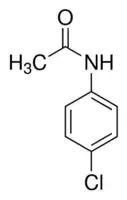Photo Engineer
Subscriber
The pH is the key as is a good antioxidant. The developers will turn cyan, magenta and yellow. That is the basic flaw in Kodachrome. The developers self destruct.
My answer to the above comments and questions is that I like to help, but knowing how messy Kodachrome is, and having seen it done and worked around the fringes, I have no desire to do it. I prefer to concentrate personally on basic emulsion making, preserving this essential part of analog photography for the future.
I have no objection to what other people want and will be glad to supply information.
PE
My answer to the above comments and questions is that I like to help, but knowing how messy Kodachrome is, and having seen it done and worked around the fringes, I have no desire to do it. I prefer to concentrate personally on basic emulsion making, preserving this essential part of analog photography for the future.
I have no objection to what other people want and will be glad to supply information.
PE




 Been struggling through some of this notation with 10th grade biology. (Gotta love common core.)
Been struggling through some of this notation with 10th grade biology. (Gotta love common core.)


